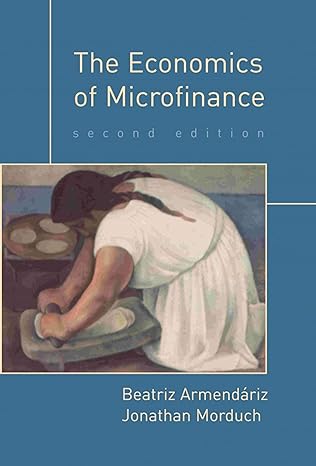Consider the following timing. First, at time 0, loans are made. Then in period 1, borrowers types
Question:
Consider the following timing. First, at time 0, loans are made. Then in period 1, borrowers’ types are revealed, followed by the realization of returns in period 2. Here, borrowers are identical ex ante—that is, before the bank extends a loan. Borrowers want to invest in projects that cost \($100\) at date 0, but they do not have any wealth of their own.
At date 1, their types are revealed. With probability π = 0.5, they will turn out to be of type 1, and with 50 percent probability they will turn out to be of type 2. A type 1 borrower can get a gross return of \($200\) with certainty. Atype 2 borrower can obtain a gross return of \($360\) with probability 0.75. The opportunity costs for type 1 and type 2 borrowers are, respectively, \($18\) and \($20.\) The gross cost of \($100\) loan for the bank is \($160.\) The bank is competitive and just wants to break even.
a. Explain what happens if the bank is unable to implement some kind of group-lending mechanism.
b. Now suppose that the bank can lend to groups of two borrowers.
Assume that the bank can also observe the final return of each borrower.
And suppose that the bank is able to impose a joint responsibility default clause: A borrower will have to pay for her partner when her partner fails or else both borrowers will be excluded from future financing. Compute the interest rate that the bank will charge in this case.
Step by Step Answer:

The Economics Of Microfinance
ISBN: 978-0262513982
2nd Edition
Authors: Beatriz Armendariz ,jonathan Morduch





